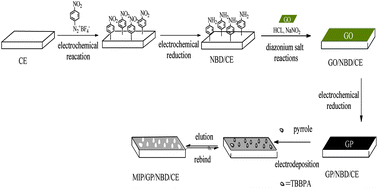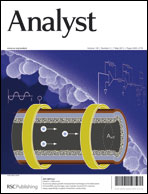Molecularly imprinted electrochemical sensor based on a reduced graphene modified carbon electrode for tetrabromobisphenol A detection
Abstract
A simple strategy for the indirect detection of 3,3′,5,5′-tetrabromobisphenol A (TBBPA) was developed with a surface imprinted sensor based on an electrochemical reduced


 Please wait while we load your content...
Please wait while we load your content...